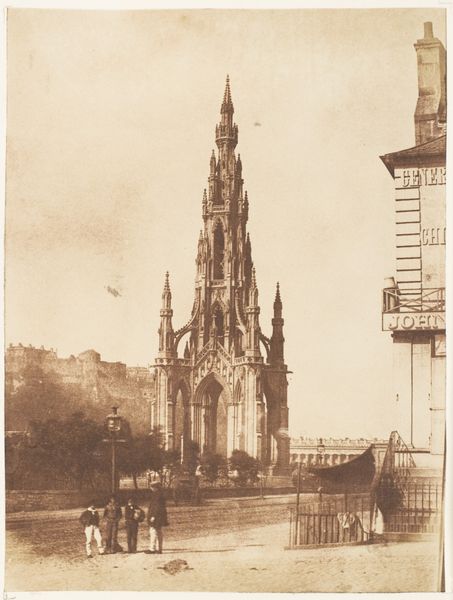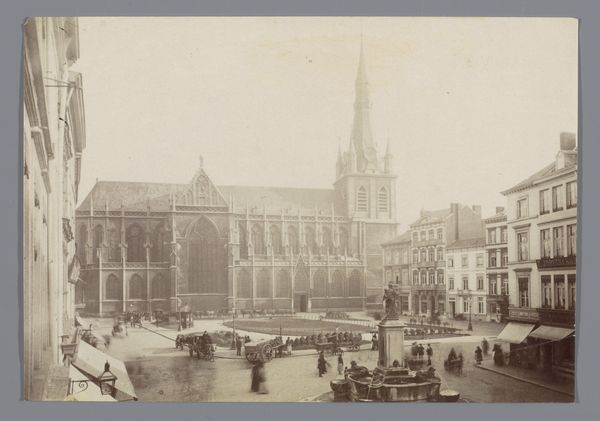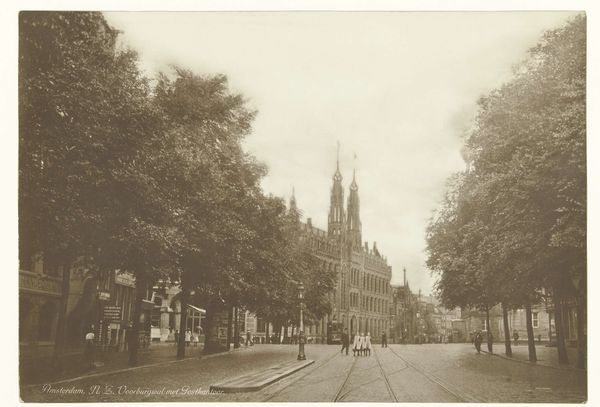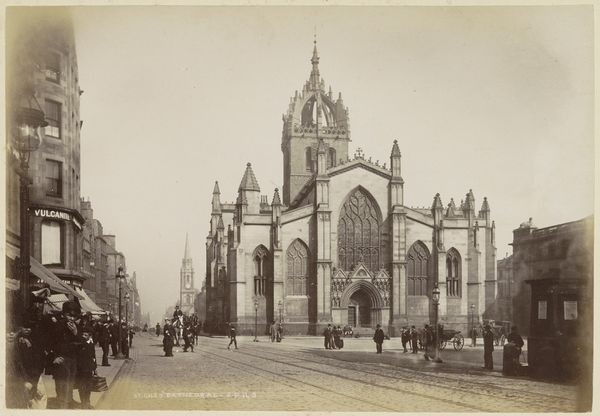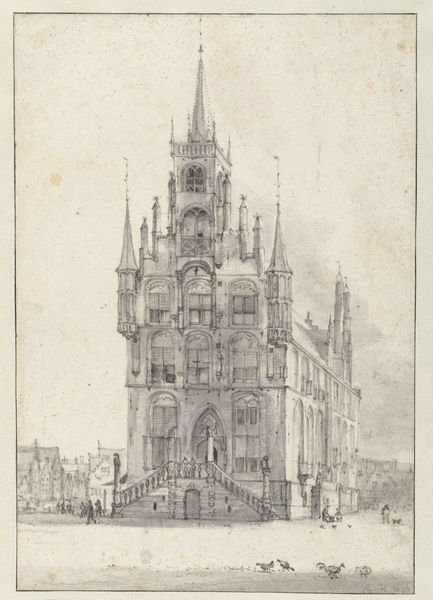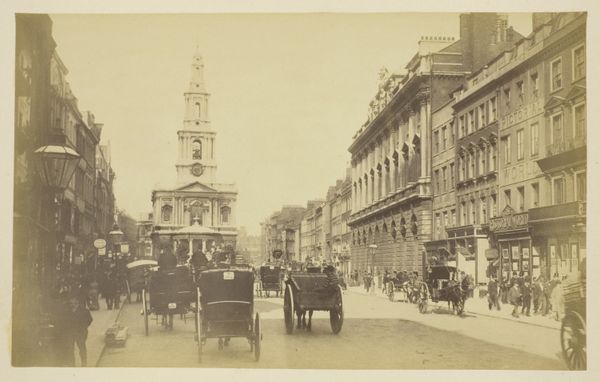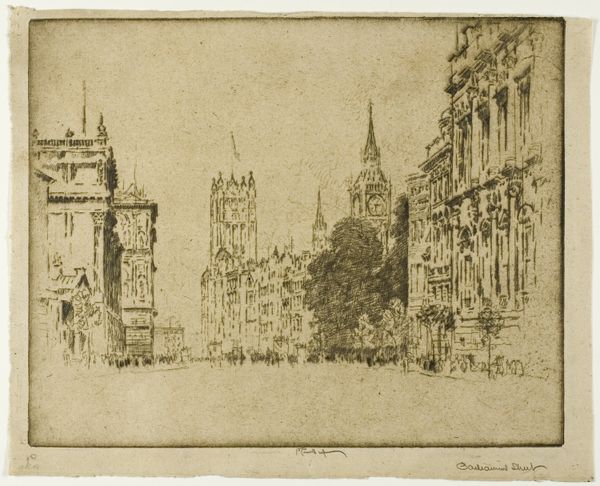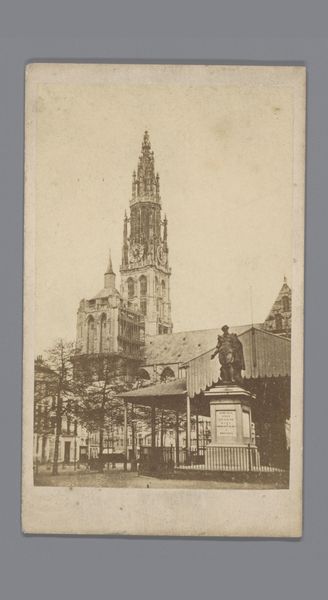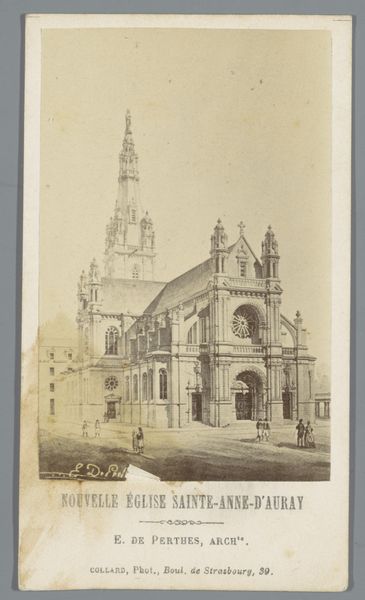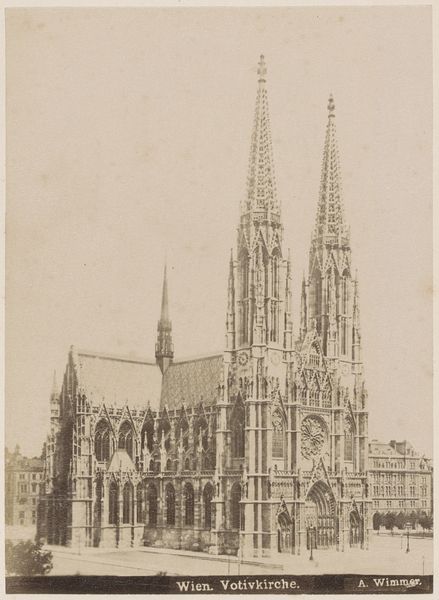
daguerreotype, photography, architecture
#
daguerreotype
#
photography
#
romanticism
#
cityscape
#
architecture
Copyright: Public Domain
Curator: What a beautifully evocative scene. This is "Edinburgh. The Scott Monument" by Hill and Adamson, dating from between 1843 and 1847. The photograph, a daguerreotype, now resides at the Metropolitan Museum of Art. Editor: It does have an almost dreamlike quality, doesn't it? The monument looms large, shrouded a bit in that early photographic fog. It strikes me as an image meant to evoke a certain sense of national pride or even perhaps, Romantic longing. Curator: Absolutely. Scott, the writer, became a symbol of Scottish identity and his monument turned into a Gothic-revival statement in Edinburgh. In its towering structure and intricate details, it reminds the viewer of Scotland's literary legacy, with its cultural impact broadcast visually to those within and beyond. Editor: And the Gothic style itself evokes a specific mood, calling back to a medieval past, loaded with imagery and legends. You know, the monument isn't merely celebrating a writer; it is embodying a spirit of artistic and national heritage. It looks almost like a cathedral. Curator: Indeed. Think of the timing, though! Photography itself was such a novelty then. To capture this monument, a relatively new, self-fashioned symbol, speaks volumes about the cultural climate in Edinburgh. It signals the urge to create lasting emblems, for both their city and their national identity through art and literature. Editor: The muted sepia tones actually intensify the impact for me. It is as if it transforms contemporary reality into something mythical and timeless, beyond mere likeness. Curator: Precisely. It transports its viewers across eras, linking their contemporary Scottish national project back to grand, historical artistic themes and ideals. The image, its presence, the moment of documentation; all politically laden with considerations of place and public memory. Editor: It certainly gave me something to consider; the image felt romantic, yet steeped in history. It prompted some new thought associations regarding how cultural icons emerge and persist across time. Curator: I concur; thinking through its layered symbolism of place and purpose, as related to photography's historical emergence, made me appreciate its political nuances more deeply.
Comments
No comments
Be the first to comment and join the conversation on the ultimate creative platform.
